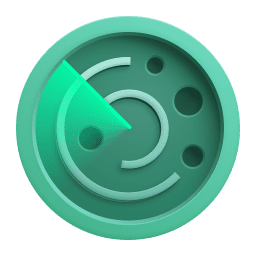Synthetic App
Latest Dynatrace
With  Synthetic you can create and manage synthetic monitors.
Synthetic you can create and manage synthetic monitors.
Synthetic monitors
The synthetic monitors page is the landing page of the Synthetic app and is the control center for your synthetic monitors. By default, the page displays all monitors in your environment, active or inactive, in a table with key availability and performance results, so you can check the health of your monitors at a glance. Powerful and flexible filters enable you to narrow your search for synthetic monitors.
To find out how to create a new monitor, see Create monitors.
Monitor table
By default, monitors with open problems (issues) are displayed alphabetically at the top of the table. Next, enabled monitors with no problems are displayed alphabetically, followed last by disabled monitors displayed alphabetically.
You can hide and sort columns in ascending or descending order. Select Columns in the top-right corner of the table to select which columns to display or hide.
Pagination controls at the bottom of the monitor table allow you to specify the number of rows per page and to move through the monitor table from page to page.
The columns display the following information for each monitor.
- Monitor name—Select to view a quick overview of the monitor to the right of the Synthetic monitors page
- Created—monitor creation date and time
- Last modified—ID of the user who last edited the monitor and the date and time of modification
- ID - full monitor identifier
- Last execution—date and time of the most recent execution from any location
- Type—monitor type, for example,
HTTP - Frequency—execution frequency or
On demand, as specified in the monitor configuration - Availability—average availability during the selected timeframe
- Duration—average performance during the selected timeframe in seconds
Filters
Filters that allow for multiple selections help you find the monitors you're looking for. You can also save frequently used filters. Expand 

The following filter categories (each with multiple options) enable you to search for monitors.
- Type—monitor type
- Ongoing issues—monitors with and without availability or performance problems
- Frontend application—associated RUM application
- Status–whether monitors are active or inactive (disabled)
- Locations–public and private monitoring locations
- Device profile—for example,
desktop,Apple iPhone 8 - Last editor–ID of the user who last edited a monitor
- Tags—values or key-value pairs applied to monitors; you can choose tags to include or exclude from your search.
- Edited during the timeframe—monitors that were or were not edited during the selected global timeframe
- ISP / Cloud provider—of public Synthetic locations
- Frequency—monitoring frequency
How filters work
Within each category, you can select multiple filters. For example, when selecting monitors by Type, you can opt to view HTTP as well as DNS monitors. Within a category, filters are applied using the OR logic—monitors matching any selection are displayed.
The filter options shown in most categories depend on your monitors; only those filters relevant to your monitors are available. For example, if you have no HTTP monitors, you won't see the HTTP option to filter by.
The number of monitors matching each filter is displayed. For example, the list of Locations shows the number of monitors per location. This number is dynamically adjusted based on your filter selections in other categories.
You can select filters in multiple categories. Filter categories are applied using the AND logic. For example, if you select all Network availability monitors (DNS, ICMP, and TCP) and two tags, IP, and host-group, the resulting list contains network availability monitors with either the IP or the host-group tags.
Filter sets
You can save combinations of filters as named filter sets for quick access to frequently used search criteria—select Save new filter and provide a filter name. You can set one filter set as the default that's applied each time you go to the Synthetic app.
Select More 
Filter bar
The filter bar 
Create monitors
In the Create monitor section, you can choose the type of synthetic monitor that you want to create.
There are three types of monitors:
- Browser monitor—choosing this option will allow you to create a browser monitor in Synthetic Classic. Learn how to Create a single-URL browser monitor.
- HTTP monitor—choosing this option will allow you to create a browser monitor in Synthetic. Learn how to Create and configure an HTTP monitor.
- HTTP monitor—choosing this option will allow you to create a browser monitor in Synthetic Classic. Learn how to Create an HTTP monitor (classic).
- Network monitor (NAM)—choosing this option will allow you to create a NAM monitor in Synthetic. Learn how to Configure a NAM monitor.
Monitor preview
In  Synthetic, to display the preview panel for a monitor, select the monitor's name in the Monitor name column of the Synthetic monitors page.
Synthetic, to display the preview panel for a monitor, select the monitor's name in the Monitor name column of the Synthetic monitors page.
To browse between your monitors, open the preview panel for any monitor and then select another monitor name to switch the preview to the newly selected monitor. Filters are persistent.
The preview panel shows:
- Tiles for important information at a glance:
- Outage/Available/No data
- Active issues
- Affected locations
- Availability
- Total downtime
- Duration
- A list of problems, including the problem start date and duration, or No problems found. To analyze a problem in the Problems app, select the problem link in the list.
- A list of changes. In latest Dynatrace, this section displays changes to the monitor: when it was changed, who changed it, and what they changed. You can only access changes from a specified timeframe.
- Properties such as monitor type, locations, requests in last execution, frequency, steps, and tags.
Use the controls in the upper-right corner of the preview panel to:
- Edit the selected monitor
- Delete the selected monitor
- Enable a disabled monitor
- Disable an enabled monitor
- Display the reporting page for the selected monitor (see below)
- Close the preview panel
Reporting
For each monitor type, you can display a reporting page. See
Private locations
The goal of private locations is to execute synthetic tests. For applications and endpoints within corporate networks, which are not available from the public internet, you need to use private locations. Also, private locations are obligatory for executing NAM tests.
You can create only classic locations using private locations for now. However, the locations list displays both classic and containerized (for example, Kubernetes and OpenShift) locations.
The Private locations tab of  Synthetic shows the list of all private locations available within a given environment. For each private location, there's information about how many synthetic monitors are assigned, with necessary links to those monitors.
Synthetic shows the list of all private locations available within a given environment. For each private location, there's information about how many synthetic monitors are assigned, with necessary links to those monitors.
Create a private location
To add a classic private location
-
Go to Private locations tab in the upper-left of the
 Synthetic home page.
Synthetic home page. -
Select Private locations > Classic.
-
Give your location a name, for example,
Boston office, 3rd floor. -
Map it from an existing geographic location or add a custom location defined by Country, Region, City, Latitude and Longitude.
-
Add a Synthetic-enabled Existing ActiveGate to the location or Deploy new ActiveGate (adding a new ActiveGate will redirect you to
 Discovery & Coverage).
Discovery & Coverage).Note that an ActiveGate can only be assigned to a single location.
-
optional Turn on Enable Chromium auto-update—it will be triggered during Synthetic engine updates at this location.
You can Enable Chromium auto-update at the location level, that is, for all ActiveGates assigned to a private location. Chromium autoupdate takes place during manual as well as automatic ActiveGate and Synthetic engine updates.
As we recommend using the latest supported Chromium version for the smooth and secure execution of browser monitors from your private location, Chromium autoupdate is turned on by default for locations with Linux-based ActiveGates. If you don't want Chromium to be updated automatically, for example, to use a specific version of Chromium, or if you have offline environments, turn off the switch before triggering an ActiveGate update.
This setting only applies to Linux-based ActiveGates; on Windows-based ActiveGates, Chromium is always updated during Synthetic engine updates. If your location has only Windows-based ActiveGates, the toggle is turned on but grayed out.
Successful Chromium autoupdate requires access to OS (system) repositories for Chromium dependencies and access to
https://synthetic-packages.s3.amazonaws.comfor Chromium components. If you've enabled a custom local repository, Chromium components (but not dependencies) need to be available at the specified HTTP server address. See Chromium autoupdate from a custom repository.You will see a message if Chromium autoupdate fails for this or other reasons—we recommend either meeting the requirements for autoupdate (such as access to repositories) or disabling Chromium autoupdate for your private location.
- We strongly recommend that you keep your ActiveGates and Chromium versions updated—Dynatrace supports Chromium versions that are no more than two versions behind the latest Dynatrace-supported version for a specific ActiveGate release. If you don't opt for Chromium autoupdate, you can update Chromium manually.
- If you disable Chromium autoupdate, you can manually update Chromium per ActiveGate. However, Chromium autoupdate is required when using custom repositories. See Chromium autoupdate from a custom repository.
- Autoupdate works to update Chromium to the latest version that Dynatrace provides for an ActiveGate release. In some cases, this might be different from the latest Dynatrace-supported Chromium version for the ActiveGate release.
Also, check our information on installing Chromium and other dependencies manually (Linux only).
-
optional If you have outage issues with your private location, use the Location outage handling options to receive related notifications. See the on-screen instructions for details.
-
Select Save.
Edit a private location
To edit an existing private location
- Go to Private locations tab to Private Synthetic locations home page.
- Select the location name to display the panel on the right.
- In the displayed panel, edit the settings.